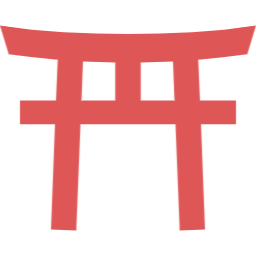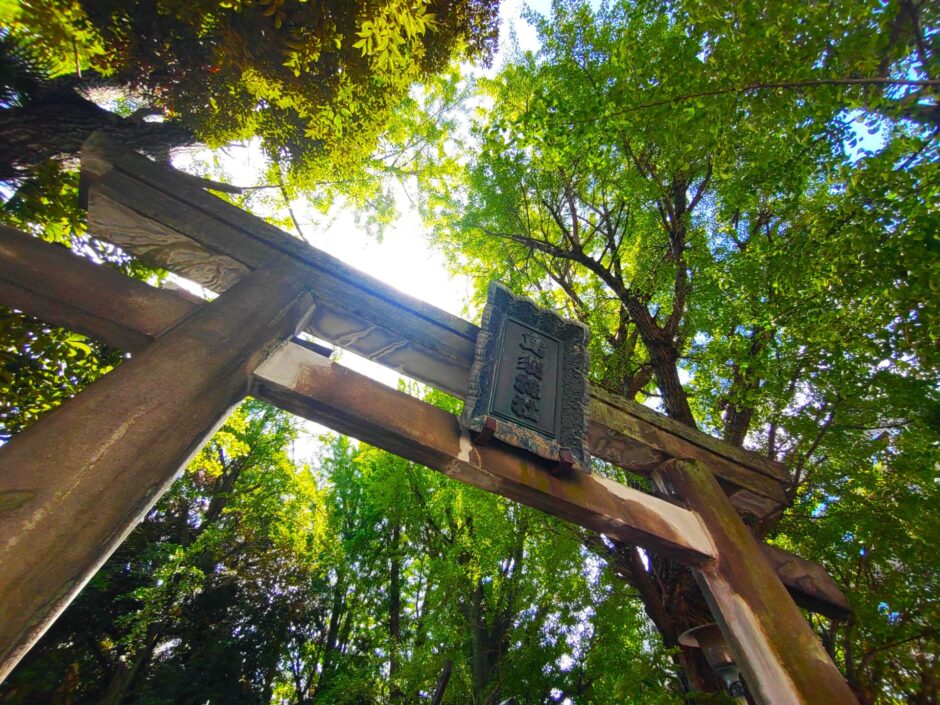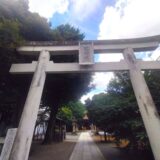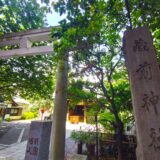目次
- 【Torikoe Shrine Summary】
- 【Torikoe Shrine precincts】
- 【Torikoe Shrine shrine building and guardian dogs】
- 【Torikoe Shrine precincts Shijiki Jinja Shrine】
- 【Torikoe Shrine precincts Fukuju Shrine】
- 【Torikoe Shrine Sengan Mikoshi】
- 【Considerations on the Relationship with Taira no Masakado】
- 【Torikoe Shrine GOSHUIN】
- 【Torikoe Shrine Nearby attractions(within a 30-minute walk)】
- 【Torikoe Shrine Access】
- Manager’s Comments
- Torikoe Shrine
【Torikoe Shrine Summary】
Torikoe Shrine was founded in 651 (Hakuchi 2). It is said to have originated when the villagers enshrined Yamato Takeru as Shirotori Myojin after he stayed in this area during his eastern campaign. Later, in 1046–1053, Minamoto no Yoriyoshi, who had been ordered by the emperor to suppress the rebellion of the Abe clan in the northern provinces, visited this area on his way to the eastern regions. His party struggled to cross the mouth of the Sumida River, but a white bird showed them a shallow crossing, allowing them to cross safely. In gratitude, Hachiman Taro Yoshiyuki dedicated the shrine name “Torikoe Daimyojin.” Additionally, the Matsudaira Shrine, which had been dedicated to Tokugawa Ieyasu and was located nearby, was destroyed in the Great Kanto Earthquake and is now enshrined together with Torikoe Shrine.
The deities enshrined here are Yamato Takeru no Mikoto, Ame no Koyane no Mikoto, and Tokugawa Ieyasu, also known as Toshogu.
【Torikoe Shrine precincts】
As it is a shrine in the city, it is not very large, but it is lined with lush green trees, and the approach is paved with stone tiles, giving it a cool atmosphere.
![Torikoe Shrine [Tokyo] DSC 1818 1 1024x768 - Torikoe Shrine [Tokyo]](https://japan-shrine.info/wp-content/uploads/DSC_1818-1-1024x768.jpg)
It is said that during the Edo period, the estate covered a vast area of 20,000 tsubo (approximately 66,000 square meters), but the Edo shogunate confiscated the land to build a storehouse for storing rice.
【Torikoe Shrine shrine building and guardian dogs】
![Torikoe Shrine [Tokyo] DSC 1819 2 1024x768 - Torikoe Shrine [Tokyo]](https://japan-shrine.info/wp-content/uploads/DSC_1819-2-1024x768.jpg)
The komainu (guardian dogs) in front of the shrine are not fluffy, but they have horns, which is unusual. They are said to bring good luck for safe childbirth. The shrine building has a stately appearance, with black and white as its main colors.
【Torikoe Shrine precincts Shijiki Jinja Shrine】
![Torikoe Shrine [Tokyo] DSC 1823 2 1024x768 - Torikoe Shrine [Tokyo]](https://japan-shrine.info/wp-content/uploads/DSC_1823-2-1024x768.jpg)
Shijiki Jinja Shrine was established between 1624 and 1644, when the god of safe childbirth was invited from the main shrine in Shimo-Kake County, Tsushima Province. The deity enshrined here is Toyotama-hime-no-mikoto.
【Torikoe Shrine precincts Fukuju Shrine】
![Torikoe Shrine [Tokyo] DSC 1827 1 1024x768 - Torikoe Shrine [Tokyo]](https://japan-shrine.info/wp-content/uploads/DSC_1827-1-1024x768.jpg)
The year of Fukuju Shrine’s founding is unknown. It is said that a branch shrine was established here from Fukuju Shrine, located halfway up the mountain near Fushimi Inari in Kyoto. The deities enshrined here are Inari Okami, Daikokuten, Ebisu, and Sugawara no Michizane.
【Torikoe Shrine Sengan Mikoshi】
Every year, the Sengan Mikoshi (3,750 kg) carried during the annual festival in June is one of the largest and heaviest mikoshi in Tokyo. During the festival period, you can see the mikoshi at the mikoshi warehouse.
【Considerations on the Relationship with Taira no Masakado】
![Torikoe Shrine [Tokyo] DSC 1815 1024x768 - Torikoe Shrine [Tokyo]](https://japan-shrine.info/wp-content/uploads/DSC_1815-1024x768.jpg)
It is said to be one of the Seven Shrines of Hokuto in Edo, but Taira no Masakado was not enshrined there. It is possible that, like Tsukudo Shrine, they refrained from listing him as an enshrined deity because he was a rebel against the imperial court.
![Torikoe Shrine [Tokyo] DSC 1621 1 160x160 - Torikoe Shrine [Tokyo]](https://japan-shrine.info/wp-content/uploads/DSC_1621-1-160x160.jpg) Tsukudo Shrine and Taira no Masakado’s Grave [Tokyo]
Tsukudo Shrine and Taira no Masakado’s Grave [Tokyo]
※Please note that this information is not posted on the grounds of Torigoe Shrine, so please refrain from asking questions to shrine officials.
【Torikoe Shrine GOSHUIN】
![Torikoe Shrine [Tokyo] torikoe G 676x1024 - Torikoe Shrine [Tokyo]](https://japan-shrine.info/wp-content/uploads/torikoe-G-676x1024.jpg)
【Torikoe Shrine Nearby attractions(within a 30-minute walk)】
Kuramae Shrine, Sōhonmiya Rokuten Sakaki Shrine, Asakusa Temple, Akihabara, Hanabusa Inari Shrine
【Torikoe Shrine Access】
Manager’s Comments
Just outside the torii gate is a busy main road with lots of traffic, but inside the shrine it is quiet and peaceful, like an oasis in the middle of a big city. Although the grounds are not very large, it is known as one of the oldest shrines in Taito Ward and plays an important role as the center of religious belief in the area. The legend of Masakado is more of an urban legend, and in my opinion, it seems a bit far-fetched. If he flew from Kyoto and crossed over Tori-ga-tori, it seems like a roundabout route, and dismembering his body doesn’t seem respectful. The Myoken faith, even if it’s factual, feels like forcing a connection between the shrine and the Big Dipper, but perhaps it’s better to leave it as an unsolved urban legend.
 Tour of Japanese shrines and temples
Tour of Japanese shrines and temples 

![Torikoe Shrine [Tokyo] DSC 1856 520x300 - Torikoe Shrine [Tokyo]](https://japan-shrine.info/wp-content/uploads/DSC_1856-520x300.jpg)
![Torikoe Shrine [Tokyo] 27246462 m 520x300 - Torikoe Shrine [Tokyo]](https://japan-shrine.info/wp-content/uploads/27246462_m-520x300.jpg)
![Torikoe Shrine [Tokyo] d9cd272395233ab6e76318c130fa6a92 - Torikoe Shrine [Tokyo]](https://japan-shrine.info/wp-content/uploads/sng/d9cd272395233ab6e76318c130fa6a92.jpg)
![Torikoe Shrine [Tokyo] DSC 1672 1 150x150 - Torikoe Shrine [Tokyo]](https://japan-shrine.info/wp-content/uploads/DSC_1672-1-150x150.jpg)
![Torikoe Shrine [Tokyo] DSC 1621 1 150x150 - Torikoe Shrine [Tokyo]](https://japan-shrine.info/wp-content/uploads/DSC_1621-1-150x150.jpg)
![Torikoe Shrine [Tokyo] DSC 0261 150x150 - Torikoe Shrine [Tokyo]](https://japan-shrine.info/wp-content/uploads/DSC_0261-150x150.jpg)
![Torikoe Shrine [Tokyo] DSC 1856 150x150 - Torikoe Shrine [Tokyo]](https://japan-shrine.info/wp-content/uploads/DSC_1856-150x150.jpg)

